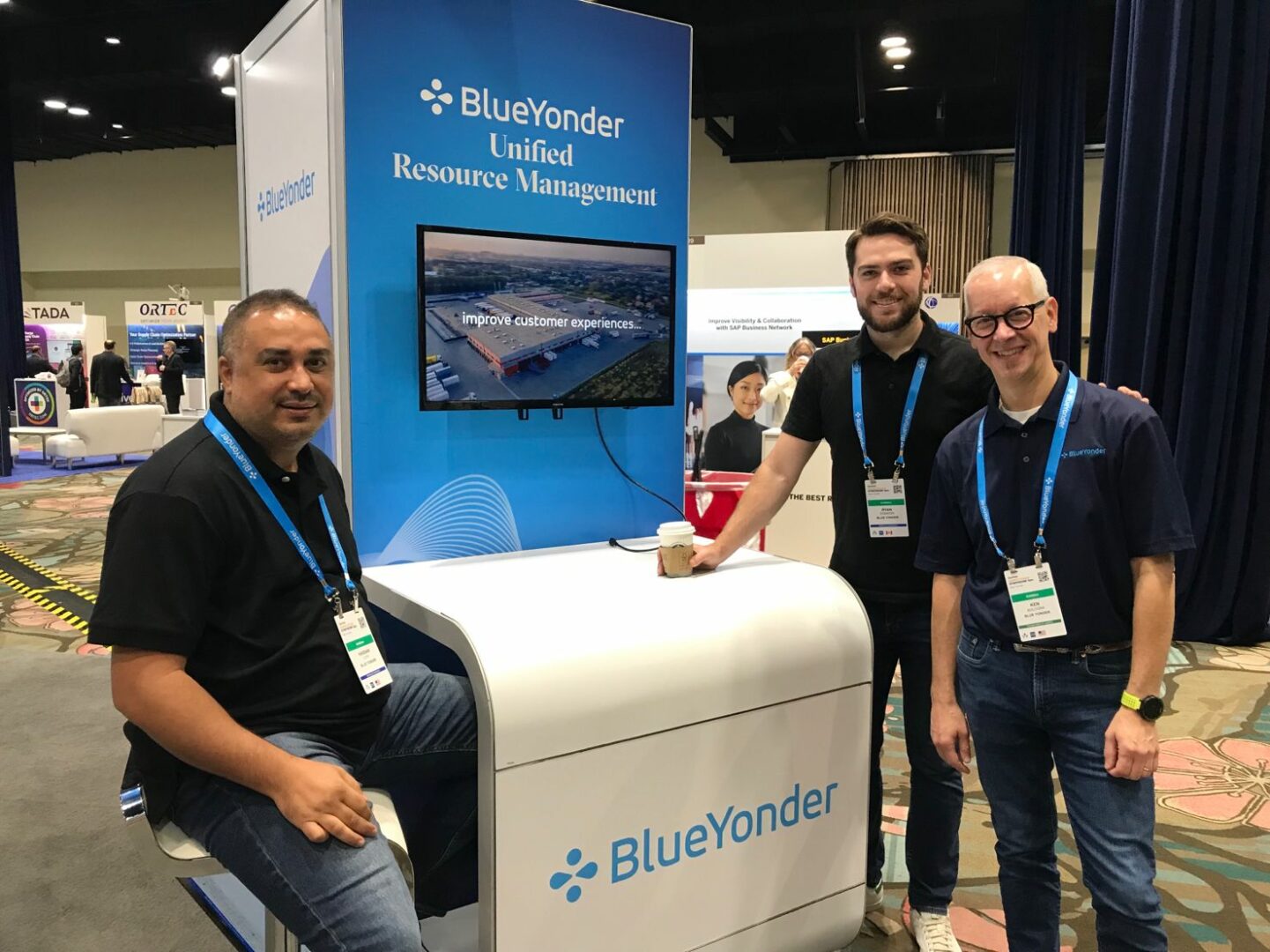Learnings and Insights From the 2023 Gartner® Supply Chain Symposium
Earlier this month, at the 2023 Gartner® Supply Chain Symposium in Orlando, Florida, there were many key supply chain themes that emerged. This blog highlights these themes, as well as how the Gartner Magic Quadrants™ are evolving.
Key Supply Chain Themes
There is a path to supply chain reinvention!
According to Miguel Cossio of Gartner in his session “The Path to Reinvention to the Supply Chain of the Future,” about half of CEOs and executive teams surveyed believe that supply chain is equally as important to business success as other functions. He observed that high-performing organizations are focusing on customer experiences and metrics such as:
- Customer satisfaction
- On time, in full (OTIF)
- Customer lead time
And of the respondents in the subset of high-performance organizations, over 70% of them believes that supply chain is as important to business success as other functions!
The path, according to Miguel Cossio, is to focus on collective actions, as well as individual experiences. The goals of collective actions include attaining real-time decision executionand achieving sustainability outcomes. The goals of individual experiences include increasing commercial innovations and focusing on human-centric work design.
Commercial innovations will enable customers more; and, enabled customers are twice as likely to repurchase. Yet, according to the 2022 Gartner Future of Supply Chain survey, only 23% of companies focus on enabling customers.
By enabling customers, order by order, through cost transparency, service menu options (like packaging options, delivery speed), collaborative planning, and product sustainability data, among other actions, there is a 3X potential in net satisfaction on delivery advantage versus competitors.
The focus on and adoption of real-time decision execution will increase 5X over the next five years. Progression has to be made in terms of making access to real-time data to making real-time decisions possible. The elements for success will include adoption of AI, culture shift, and modification in decision frameworks.
The path to supply chain reinvention is better understood now and high-performing organizations are taking on this journey for competitive advantage.

Insights From Magic Quadrant Session: WMS
There are areas of tremendous growth in areas such as Warehouse Management Systems, Warehouse Executive Systems, Labor Management, and Warehouse Control Systems. According to Gartner Analyst Dwight Klappich, the top reasons that companies are investing in new technologies include:
- Pursue new business and operating models
- Drive efficiency
- Improve supply chain resiliency and agility
- Improve decision making
- Address labor constraints and shortages
He quoted the key results from the 2022 Gartner Supply Chain Technology User Wants and Needs Survey: 43% of respondents will increase investment and 45% will maintain investment in the four growth areas mentioned above. Even though the warehouse management process has been the same for decades, the next area of innovation will be around what he called “Warehouse Operation Management,” which includes the four areas of growth above and several areas like Yard Management System, Warehouse Planning & Optimization, and Multiagent Orchestration Platform.
The aspects of innovations will include:
- Composable technologies
- User experience
- Decision support
- Automation and robotics
- Indoor location via RFID
- Implementation and integration tools
Insights From Magic Quadrant Session: TMS
During her session, Carly West, Gartner Analyst, shared the top reasons for investment in transportation systems based on the latest survey results:
- 78% of respondents mentioned efficiency
- 74% mentioned visibility
- 70% mentioned cost management
She also mentioned that end users are expecting new systems will be easy-to-use, cloud-based, have all the necessary functionalities, and have low total cost of ownership (TCO). From the deployment standpoint, the dominant method will be cloud, which improves speed and TCO.
For TMS technology trends, she highlighted that sustainability is hotter than ever. She and other TMS analysts received many more inquiries about sustainability this year than previous years. The other top trends include:
- More use cases for AI/ML
- Deeper functionality for the ecosystem of carriers, suppliers, and service providers
- Focus for all miles (and no longer on just inbound, outbound, intra company, or returns)

Insights From Magic Quadrant Session: SCP
The supply chain technology market was worth $6.4B in 2022 and is expected to reach $11.4B by 2026, with a CAGR of 12.8%. The market trends that propel this growth include:
- Cloud and SaaS strategies, as well as the resulting innovations and use cases
- The increasing use of AI/ML
- The increase in supply chain variability and risk
- End-to-end and multi-enterprise trends
- The blurring of boundaries between planning and execution
Pia Orup Lund, Gartner Analyst, mentioned that SCP solutions are evolving beyond demand and supply balancing. Gartner observes a trend towards tighter synchronization between supply chain, commercial, and finance, with closed-loop performance management.
She also observed that solution providers are exploring partnerships to enhance their standard offerings.
Insights From Magic Quadrant Session: 3PL Industry
It is still a roller coaster ride in 2023 for 3PL companies according to Jose Reyes, Gartner Analyst.
To counter the adverse impacts of this roller coaster ride, 3PLs are:
- Focusing on resilience and agility by developing predictive analytics and creating diversity.
- Innovating digitally through human-centric digitization and network transparency.
- Increasing sustainability initiatives such as green warehouses and carbon mapping.
- Forming collaborative and strategic partnerships.
The important measurements of how well a global 3PL performs in the operational execution includes market responsiveness, customer experience, and services and offerings, in addition to the core criteria such as company viability and operations.
“The Moment That You Need the Truth…”
A highlight from the event was the “Victory Through Teamwork” keynote session by Coach K, i.e., Coach Mike Krzyzewski of Duke University men’s basketball team who led Team USA to three Olympic gold medals. Winning attitudes, according to Coach K, include always doing your job, trust, respect, and selfless service, to name a few. And equally important, the moment that you need the truth, you really depend on others to tell the truth.
Imagine if you can do that in the supply chain, according to Coach K, everyone in the team wins!

Blue Yonder as a Supply Chain Leader
In the exposition hall, Blue Yonder’s booth was highly visited. Supply chain leaders were particular interested in exploring our innovations in first-to-last mile logistics optimization, synchronized planning and execution, and control tower, in their efforts to position their supply chains to succeed in the new world.
At the event, Blue Yonder highlighted its standing as the only company recognized a Leader in three Gartner Magic Quadrant reports1 covering Supply Chain Planning, Transportation Management Systems and Warehouse Management Systems – consistently for the past three years. Please read our TMS, WMS, and SCP blog posts for details. If you would like to learn more, visit blueyonder.com.
More Insights From This Symposium
In Part 2, we share insights from additional sessions by Gartner analysts about new technologies that will be beneficial to long-term supply chain performance, as well as our customer Lenovo’s session on their digital transformation.
1 Gartner, “Magic Quadrant for Supply Chain Planning Solutions,” Pia Orup Lund, Amber Salley, Tim Payne, Janet Suleski, Joe Graham, Caleb Thomson, 2 May 2023; “Magic Quadrant for Transportation Management Systems,” Brock Johns, Oscar Sanchez Duran, Carly West, 28 March 2023; “Magic Quadrant for Warehouse Management Systems,” Simon Tunstall, Dwight Klappich, Rishabh Narang, Federica Stufano, 8 May 2023.
Gartner does not endorse any vendor, product or service depicted in its research publications, and does not advise technology users to select only those vendors with the highest ratings or other designation. Gartner research publications consist of the opinions of Gartner’s research organization and should not be construed as statements of fact. Gartner disclaims all warranties, expressed or implied, with respect to this research, including any warranties of merchantability or fitness for a particular purpose.
GARTNER is a registered trademark and service mark of Gartner and Magic Quadrant is a registered trademark of Gartner, Inc. and/or its affiliates in the U.S. and internationally and are used herein with permission. All rights reserved.

